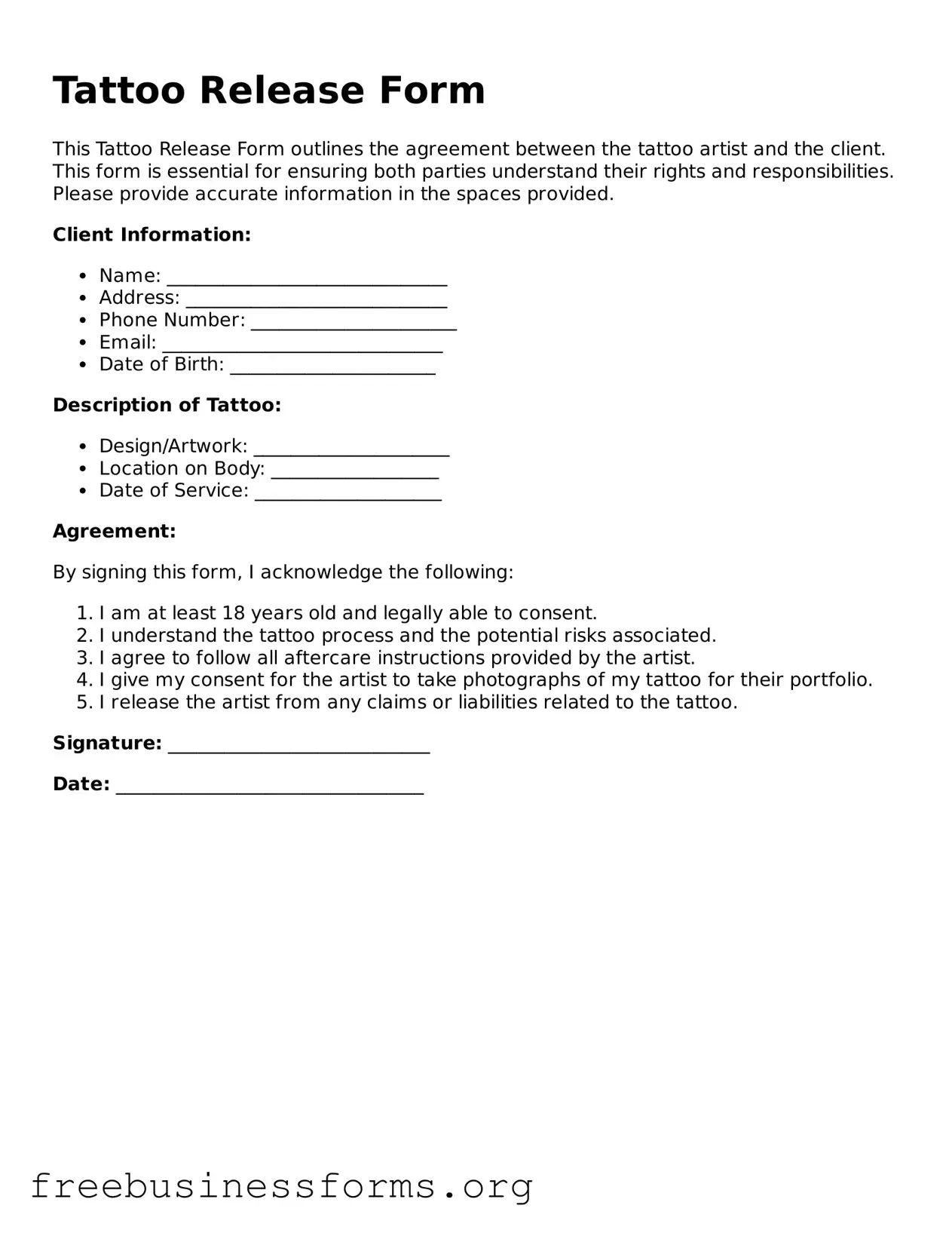Official Tattoo Release Form
A Tattoo Release Form is a legal document that grants permission for a tattoo artist to proceed with a tattoo on an individual. This form not only protects the artist from liability but also ensures that the client understands the risks and responsibilities involved in the tattooing process. By signing this document, clients acknowledge their consent and acceptance of the terms outlined, paving the way for a professional and transparent tattoo experience.
Open Form Here
